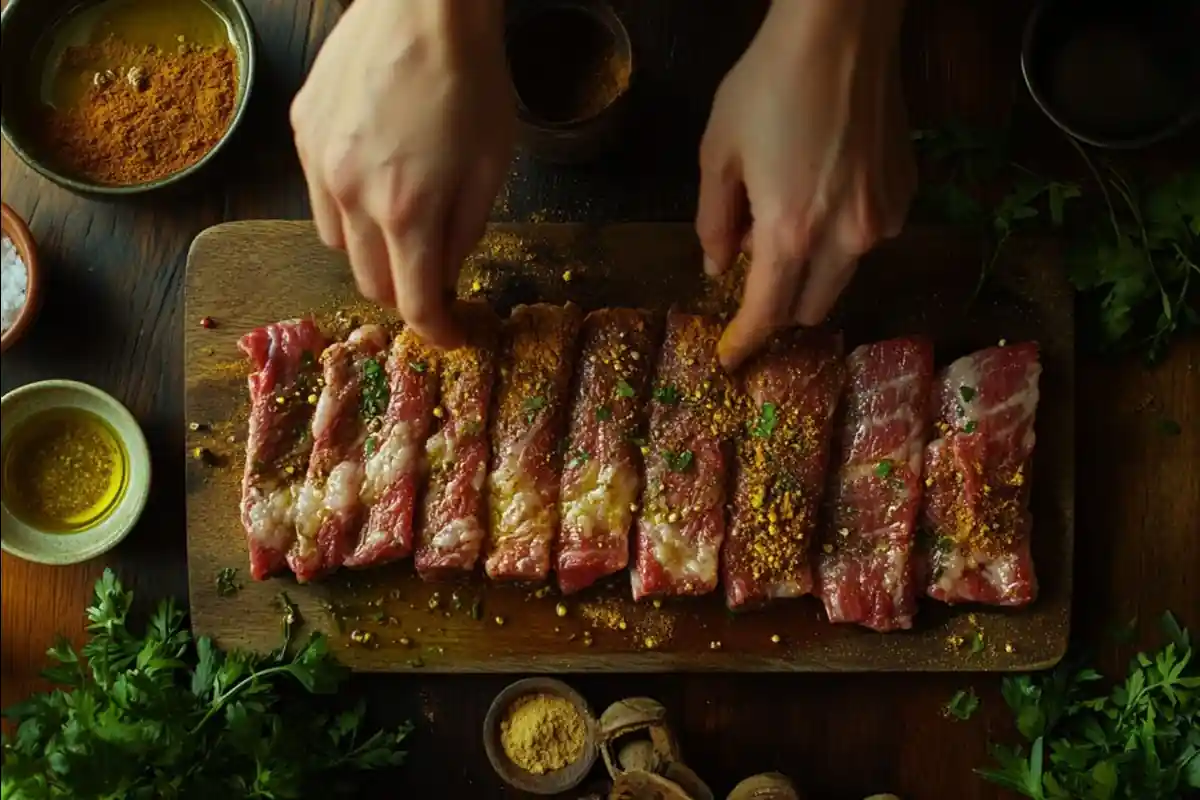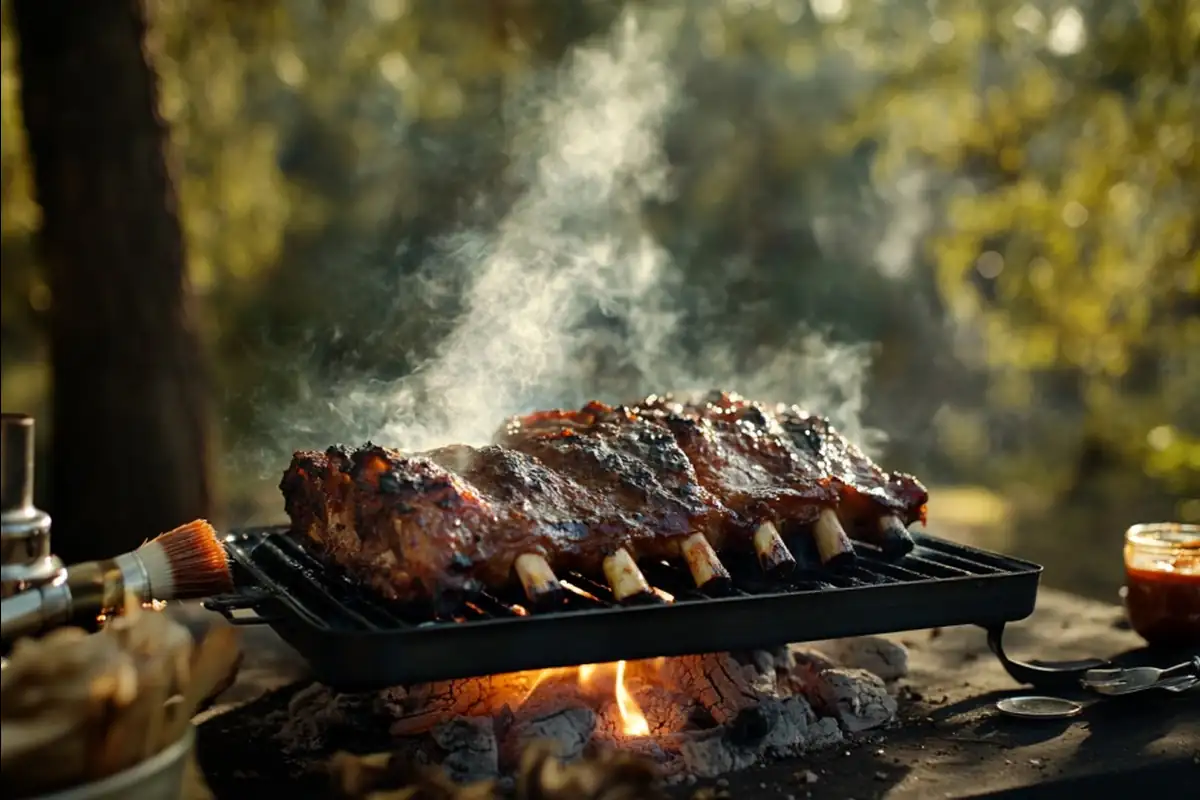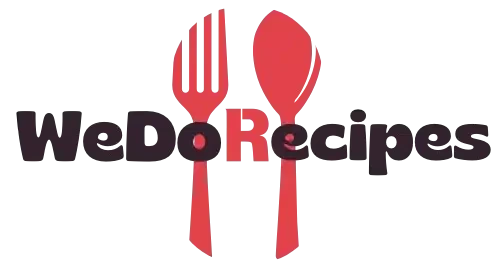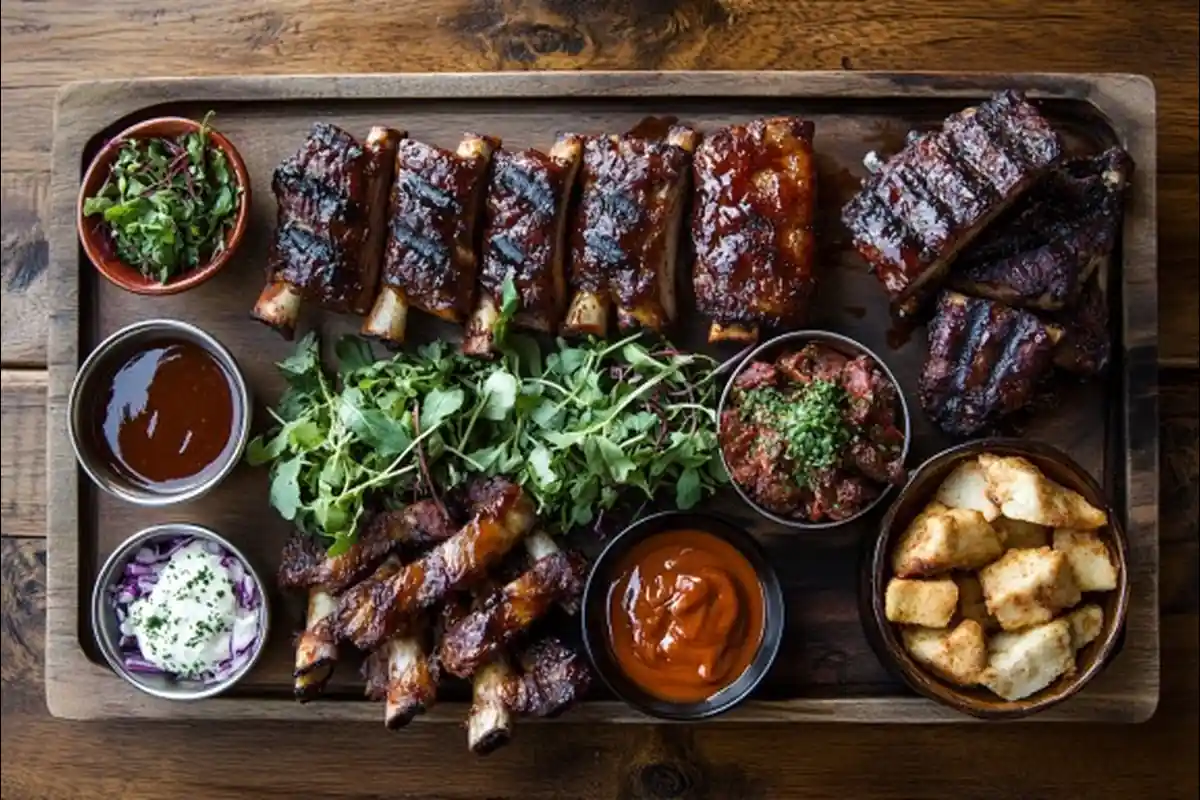Are Beef Finger Ribs the Same as Back Ribs? This question often confuses barbecue lovers, as these two cuts offer different textures, flavors, and cooking methods. Two popular cuts, beef finger ribs and back ribs, often stir up confusion among cooks and foodies alike. Are they the same? Can they be used interchangeably? This article dives into these questions, explores their differences, and reveals the best ways to cook and savor these cuts. Whether you’re firing up the smoker or experimenting in the kitchen, this guide will help you choose the right ribs for your next feast.
Part 1: Understanding Beef Ribs: The Basics
What Are Beef Finger Ribs?
Beef finger ribs are strips of meat carved from between the bones of beef ribs. They’re rich in fat and connective tissue, making them juicy and flavorful when cooked low and slow. The name “finger ribs” comes from the thin, finger-like strips of meat, which are cut from the rib section after larger portions like ribeye steaks have been removed.
These ribs are often overlooked due to their smaller meat-to-bone ratio, but don’t be fooled! Their rich marbling and tender texture make them perfect for barbecue, stews, or even quick stir-fries. You’ll often find them labeled as “rib fingers” or “boneless rib meat” at the butcher.
What Are Back Ribs?
Beef back ribs are the bones left behind after the ribeye or prime rib has been separated. These ribs are longer and have more meat on top of the bones compared to finger ribs. They come from the upper part of the cow’s ribcage, near the spine, which is why they’re sometimes called “dinosaur ribs” due to their size.
While back ribs can be tougher than finger ribs, their larger meat portions and robust beef flavor make them a go-to choice for smoking, grilling, or slow-cooking. They’re a common sight in barbecue joints and grocery stores, making them more widely available than finger ribs.
Key Differences Between the Two
- Meat Placement: Finger ribs have meat between the bones, while back ribs boast meat on top of the bones.
- Size: Back ribs are typically larger and meatier.
- Fat Content: Finger ribs are fattier, offering a richer, juicier bite when cooked right.
These differences in structure and flavor profile mean that each type has its own unique strengths and is best suited for specific dishes.
Part 2: Comparison Between Beef Finger Ribs and Back Ribs
Structural Differences
When it comes to structure, beef finger ribs and back ribs have distinct characteristics. Finger ribs are thin strips of meat nestled between the bones. These cuts come from the ends of the ribcage, resulting in less meat but a fatty, flavorful bite. In contrast, back ribs are derived from the top portion of the ribcage, near the spine, where they hold more meat on top of the bones.
The presence of meat between the bones in finger ribs makes them unique, while back ribs are characterized by their thicker slabs of meat. The anatomy of these cuts plays a big role in how they’re cooked and enjoyed.
Texture and Flavor Profiles
If you’re after tender, melt-in-your-mouth bites, finger ribs deliver thanks to their high fat content. When slow-cooked or smoked, the fat renders beautifully, resulting in juicy meat with a rich beef flavor. Meanwhile, back ribs have a slightly chewier texture due to their leaner meat, but they’re equally delicious when prepared with the right method.
The flavor of back ribs leans toward a smoky, robust beefiness, making them a favorite for barbecue. Finger ribs, with their higher fat, offer a luxurious, buttery taste, especially when basted with a savory glaze or marinade.
Best Uses for Each Cut
So, when should you choose one over the other? Beef finger ribs are perfect for dishes that emphasize tenderness and richness, like stews or slow-cooked meals. For grilling and smoking, back ribs are the go-to choice because their size and structure allow for even cooking over heat.
If you’re planning a barbecue feast, back ribs are ideal for slathering with barbecue sauce and smoking low and slow. For an indulgent treat, finger ribs can be braised or slow-roasted, letting their fat create a silky texture and deep flavor.
Part 3: How to Cook Beef Finger Ribs and Back Ribs
Step-by-Step Cooking Guide for Beef Finger Ribs

Cooking beef finger ribs is all about patience. Start by removing any silver skin and excess fat. Use a dry rub with spices like paprika, garlic powder, and black pepper to enhance their natural flavor. For a smoky finish, slow-cook the ribs at 250°F for 3-4 hours.
Alternatively, braising finger ribs in a flavorful liquid like beef broth or wine can create a tender and juicy dish. This method locks in moisture and ensures every bite is packed with rich, savory goodness.
Step-by-Step Cooking Guide for Back Ribs
Back ribs are ideal for smoking or grilling. To start, trim any excess fat and season generously with a barbecue rub. Preheat your smoker to 225°F, and place the ribs bone-side down. Smoke for 5-6 hours, spritzing occasionally with apple cider vinegar to maintain moisture.
For those without a smoker, grilling back ribs over indirect heat works wonders. Wrap the ribs in foil for the first few hours to lock in juices, then finish them directly on the grill to achieve a crispy, caramelized crust.
Cooking Tips for Maximum Flavor
For both cuts, marinating overnight can elevate the flavor. Use a mix of soy sauce, Worcestershire, and brown sugar to create a balanced sweet-and-savory profile. Don’t forget to let the ribs rest after cooking—this step allows the juices to redistribute, resulting in tender, flavorful meat.
Both beef finger ribs and back ribs shine with proper preparation. Understanding their unique cooking needs ensures that you’ll bring out the best in these delicious cuts.
4: Choosing the Right Beef Ribs for Your Dish
When to Choose Beef Finger Ribs

If your recipe calls for melt-in-your-mouth tenderness, finger ribs are the way to go. These cuts excel in slow-cooked dishes like braises, curries, or beef stews. The high fat content not only adds flavor but also keeps the meat moist throughout cooking.
For a unique twist, try finger ribs in a spicy stir-fry or teriyaki glaze. The bite-sized pieces are perfect for quick weeknight dinners that don’t sacrifice flavor.
When to Choose Back Ribs
Back ribs are the classic choice for barbecue lovers. Their larger meat portions make them ideal for grilling or smoking, where they can soak up the flavors of marinades and rubs. These ribs shine at family cookouts or gatherings where a smoky, meaty centerpiece is a must.
If you enjoy experimenting, try baking back ribs with a sweet and tangy glaze. This approach brings out their beefy flavor while creating a sticky, caramelized finish.
Explore More Recipes
For more mouthwatering ideas and recipes, check out our Beef Fingers Guide for tips on preparing delicious beef dishes. This guide complements your exploration of beef finger ribs and offers additional inspiration for creative cooking.
5: Exploring Key Insights About Beef Finger Ribs and Back Ribs
What Are the Nutritional Differences Between These Cuts?
When comparing beef finger ribs and back ribs, their nutritional content differs due to fat levels and meat density. Finger ribs, being fattier, are higher in calories and saturated fats. They’re ideal for dishes that benefit from their rich, juicy flavor but may not be the healthiest option for daily meals.
In contrast, back ribs are leaner, offering more protein per serving with less fat. This makes them a better choice if you’re watching your calorie intake but still crave a hearty beef dish. Regardless of the cut, moderation and balance are key to enjoying these delicious ribs as part of a healthy diet.
Can You Substitute One for the Other in Recipes?
It depends on the dish. While beef finger ribs and back ribs are both flavorful, their textures and fat content can significantly impact a recipe. For stews and slow-cooked dishes, finger ribs are unbeatable due to their tenderness and fat. However, back ribs are better suited for grilling or smoking, where their larger meat portions can hold up well to heat.
If you’re in a pinch, you can substitute one for the other, but be mindful of adjusting cooking times and methods. For example, you might need to add extra moisture or shorten cooking times when swapping back ribs for finger ribs in a slow-cooked recipe.
6: Wrapping Up: Are Beef Finger Ribs the Same as Back Ribs?
So, are beef finger ribs the same as back ribs? Clearly, they’re not. While both cuts hail from the rib section of the cow, their differences in structure, texture, and culinary uses make them distinct. Finger ribs, with their rich fat and small portions of meat, are perfect for slow-cooked dishes. Back ribs, on the other hand, shine in barbecue or grilling scenarios where their robust flavor and larger size take center stage.
By understanding these differences, you can make the right choice for your next meal. Whether you’re hosting a summer cookout or preparing a cozy stew, there’s a rib cut that’s just right for the occasion.
Final Tips for Enjoying Beef Ribs
No matter which cut you choose, the key to great ribs lies in preparation and patience. Experiment with different rubs, marinades, and cooking techniques to find what works best for your taste. And don’t forget—resting the meat after cooking allows the flavors to settle and the juices to redistribute, ensuring every bite is as satisfying as the first.
Looking for more recipe informations about this dish? Be sure to explore What are beef fingers? for guides and creative ideas to elevate your cooking.
7: The Verdict on Are Beef Finger Ribs the Same as Back Ribs?
Why the Distinction Matters
The question “Are beef finger ribs the same as back ribs?” has a straightforward answer: they are fundamentally different. Knowing their distinctions can help home cooks and pitmasters alike make better decisions in the kitchen or at the grill. Finger ribs are best for dishes that benefit from their rich fat content, such as slow-cooked meals, while back ribs excel in grilling and smoking, thanks to their thicker, leaner meat.
Understanding these differences isn’t just about culinary knowledge—it’s about elevating your meals. Choosing the right cut ensures your dish has the right balance of texture, flavor, and moisture, which can make or break a recipe.
How to Choose Between the Two
Selecting between these cuts depends on your cooking style and the occasion. If you’re hosting a backyard barbecue, back ribs are the perfect centerpiece with their meaty portions and ability to soak up smoky flavors. On the other hand, if you’re preparing a cozy, slow-cooked stew for a family dinner, finger ribs will provide the richness and tenderness that make these dishes unforgettable.
Knowing when and how to use these cuts transforms your cooking, allowing you to create meals that impress.
8: FAQs About Beef Finger Ribs and Back Ribs
Are Back Ribs and Finger Ribs the Same?
No, they’re not. Back ribs come from the upper ribcage with more meat on top, while finger ribs are thin strips of meat between the bones, making them distinct in structure and culinary uses.
What Is Beef Rib Finger Meat Good For?
Beef rib finger meat is ideal for slow-cooked dishes like stews and braises due to its high fat content. It’s also great for grilling, stir-frying, or adding richness to soups.
Are Beef Finger Ribs Tender?
Yes, when cooked low and slow, finger ribs become incredibly tender. Their high fat content renders beautifully, giving them a melt-in-your-mouth texture.
How Long to Smoke Beef Finger Ribs?
To achieve perfectly smoked finger ribs, cook them at 225°F for about 3-4 hours. Spritz with apple cider vinegar or broth every 30 minutes to keep them moist and enhance their smoky flavor.
Part 9: Elevating Your Beef Rib Recipes
Tips for Perfectly Cooked Ribs
When it comes to cooking ribs, technique is everything. Whether you’re dealing with finger ribs or back ribs, here are some universal tips:
- Always remove the silver skin from the ribs. This thin membrane can block flavors from penetrating the meat.
- Use a dry rub to create a flavorful crust. A mix of salt, pepper, paprika, and garlic powder works well for both cuts.
- Rest your ribs after cooking to lock in the juices. Letting the meat sit for 10-15 minutes before serving ensures a succulent bite.
Pairing and Serving Suggestions
To make your rib dish shine, pair it with complementary sides and sauces. For beef finger ribs, creamy mashed potatoes or buttery cornbread balance their rich, fatty flavors. For back ribs, go for smoky baked beans, tangy coleslaw, or a classic barbecue sauce.
To take your presentation to the next level, garnish your ribs with fresh herbs like parsley or cilantro. These small details make a big difference in impressing your guests.
Explore More Recipes
For additional inspiration and to elevate your beef rib creations, explore our Beef Finger Recipes Guide. This guide offers a range of ideas tailored to both amateur cooks and seasoned chefs.
With these tips and insights, you can confidently answer the question “Are beef finger ribs the same as back ribs?” and create dishes that showcase the best qualities of each cut. Now, it’s time to roll up your sleeves and start cooking!


2 thoughts on “Are Beef Finger Ribs the Same as Back Ribs?”